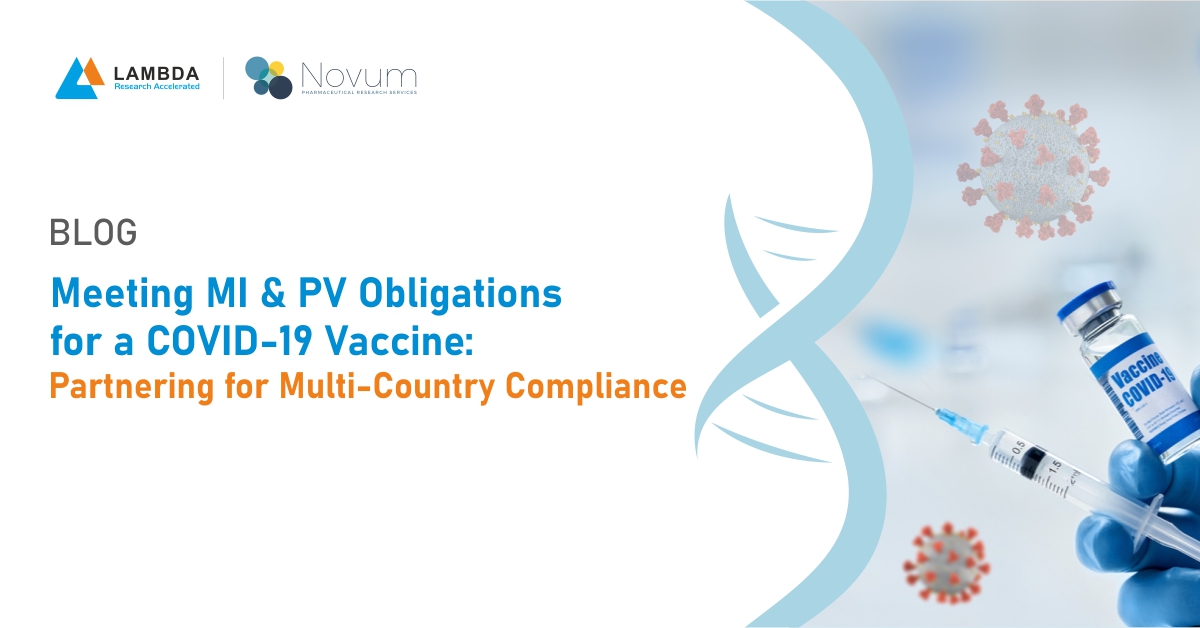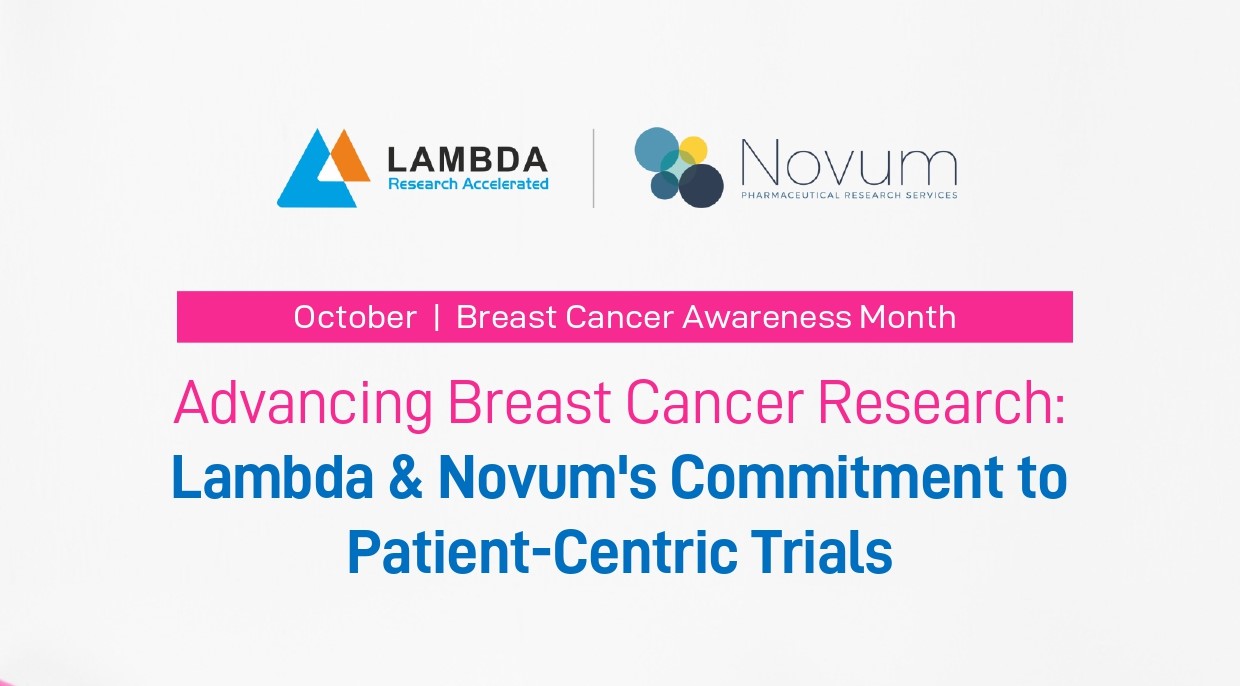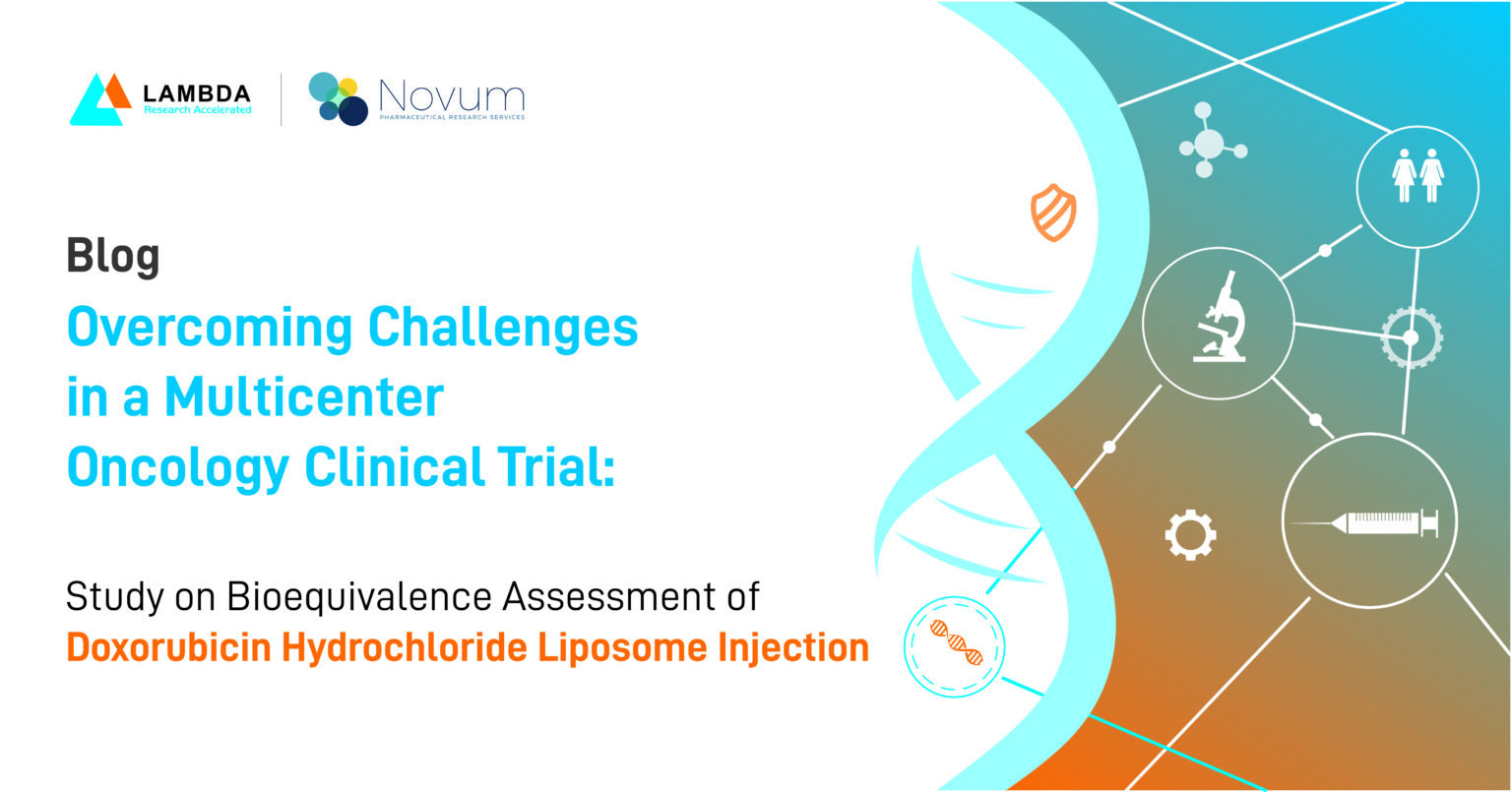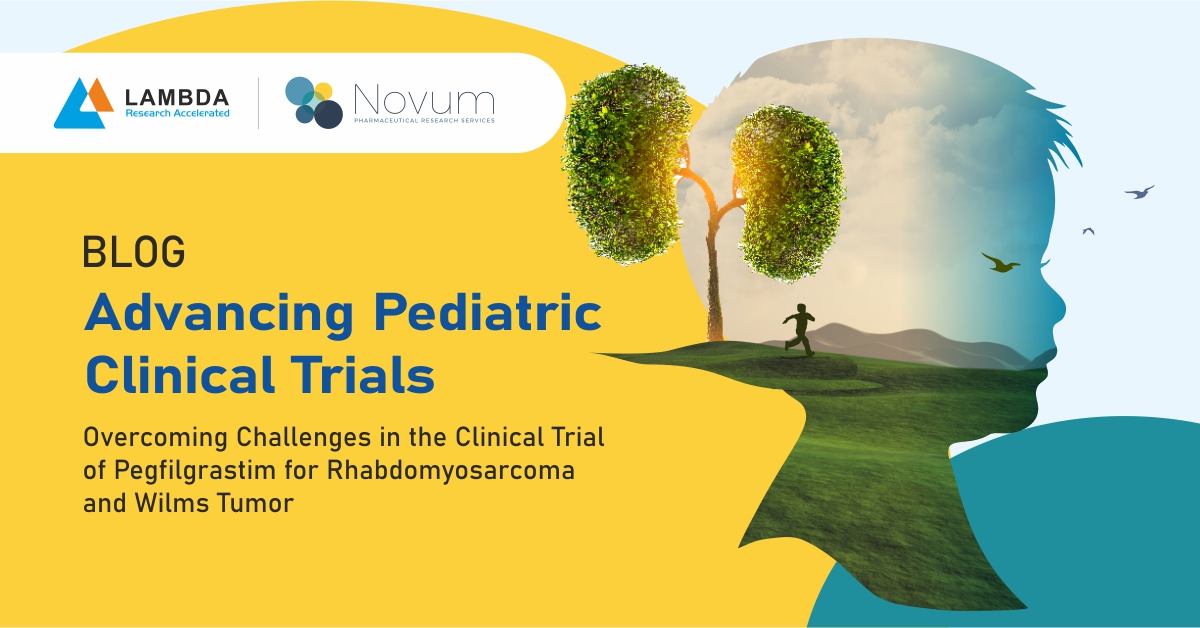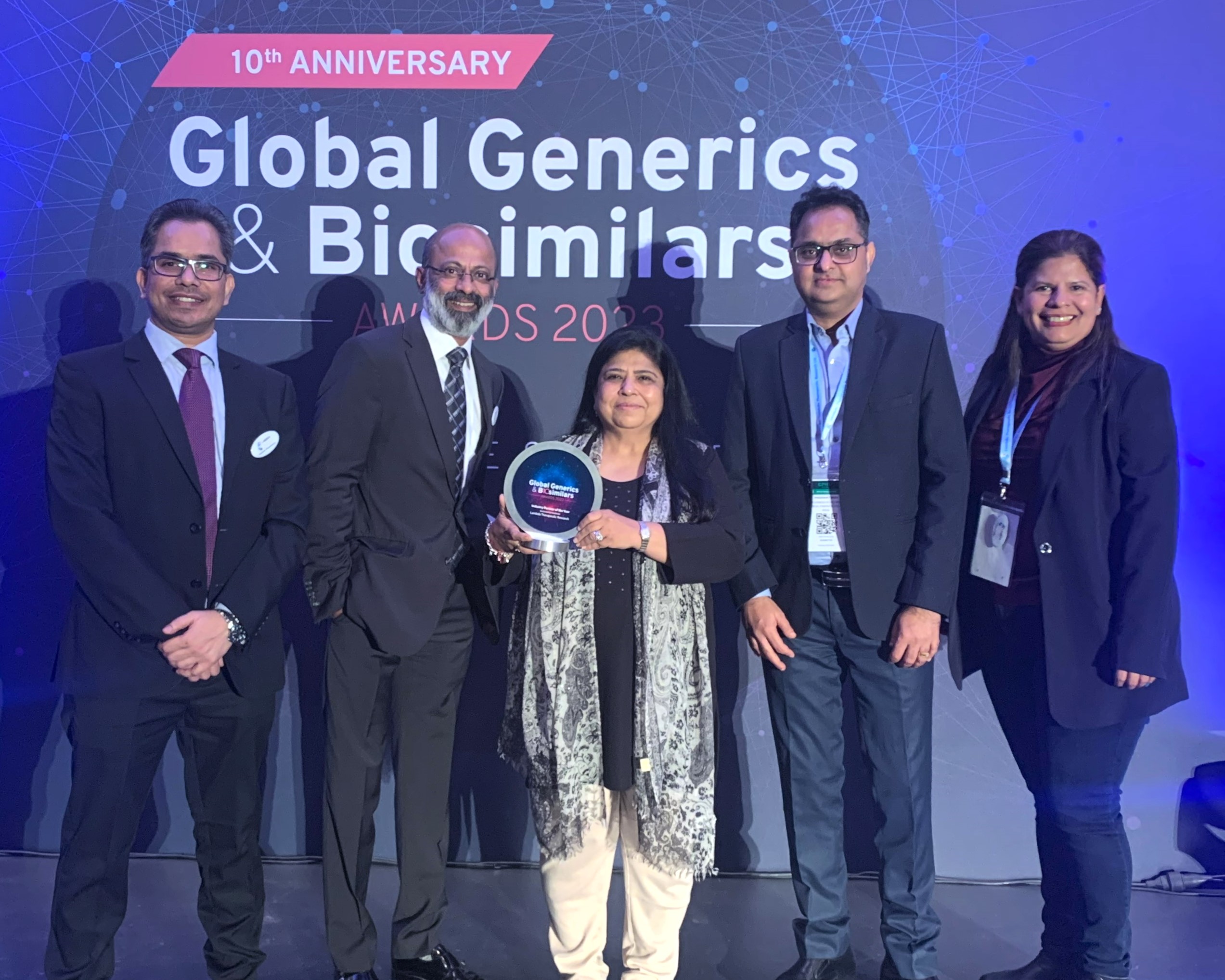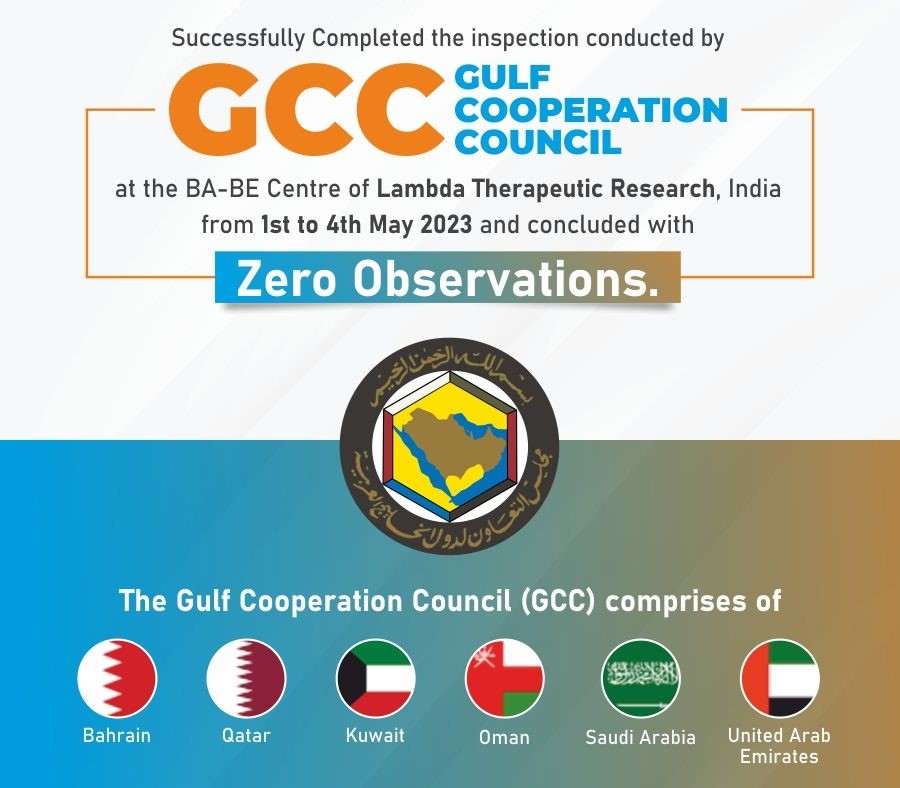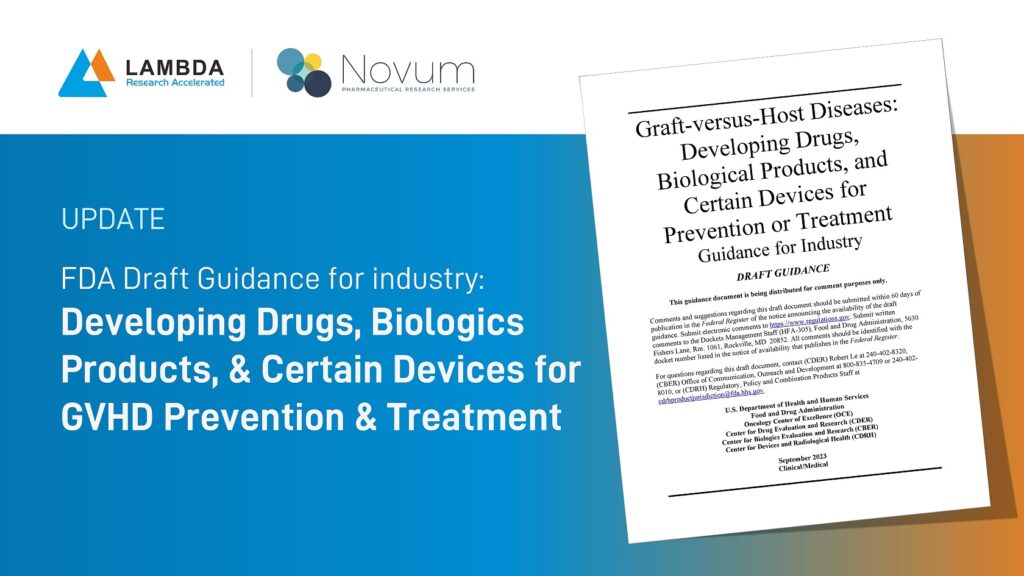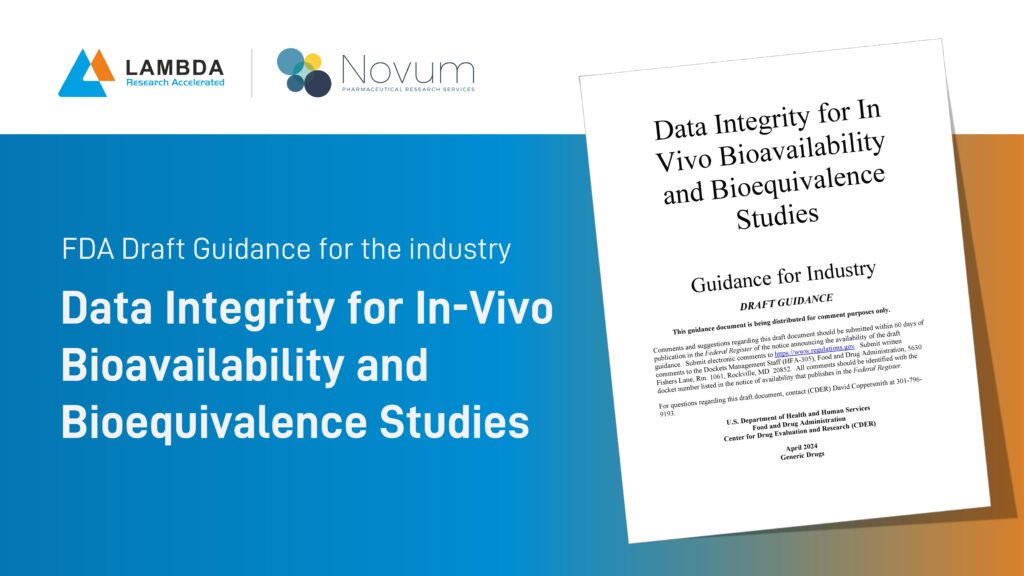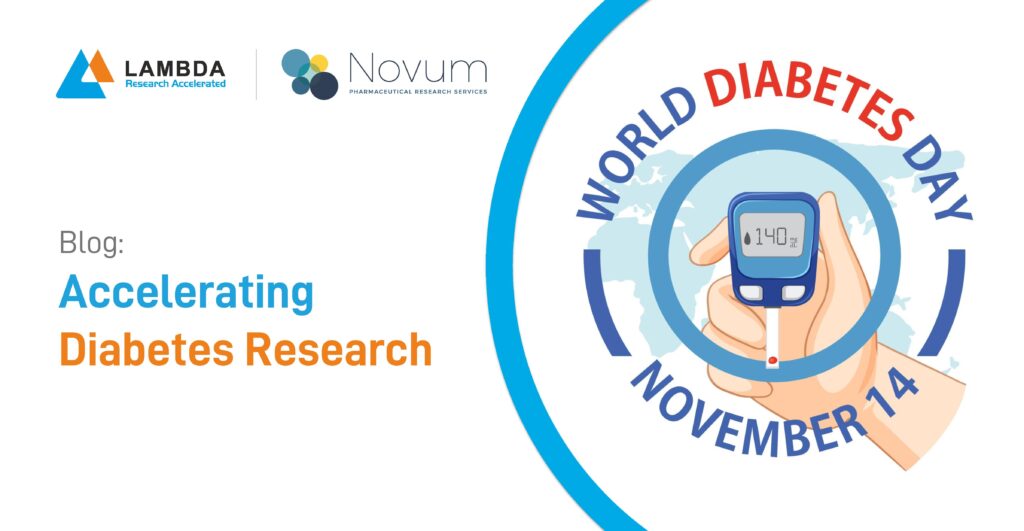04 Oct 2023
The US Food and Drug Administration (FDA) recently released a draft guidance titled “Graft-versus-Host Diseases: Developing Drugs, Biological Products, and Certain Devices for Prevention or Treatment.” This guidance aims to assist sponsors in the clinical development of drugs, biological products, therapeutic devices, and cell processing devices for the prevention or treatment of acute graft-versus-host disease (aGVHD) or chronic graft-versus-host disease (cGVHD) after allogeneic hematopoietic stem cell transplantation (HSCT). The guidance provides recommendations regarding clinical trial design, statistical analysis, and other critical design elements for early and late-phase trials targeting these conditions. Importantly, it does not cover technical aspects of therapeutic or cell-processing devices. Stakeholders are invited to submit comments on this draft guidance within 60 days of its publication in the Federal Register.
Here are the important points from the draft guidance titled “Graft-versus-Host Diseases: Developing Drugs, Biological Products, and Certain Devices for Prevention or Treatment”:
Biomarkers and Companion Diagnostic Devices:
- Sponsors developing drugs based on biomarker-identified populations may need a Type C meeting with the FDA to obtain feedback on clinical and analytical validity.
- If a drug requires a companion in vitro diagnostic device (IVD), the IVD will be considered investigational unless it’s already used for the same purpose in a cleared indication.
- Sponsors can inquire with the Center for Devices and Radiological Health (CDRH) or the Center for Biologics Evaluation and Research (CBER) about study risk determination before proceeding.
Consideration of Concomitant Medications:
- Most transplant patients take multiple concomitant medications, including antifungals and immunosuppressants.
- These drugs may be substrates, inducers, or inhibitors of cytochrome P450 (CYP) enzymes or other metabolizing enzymes.
- In vitro studies should explore potential metabolic irregularities and drug excretion in patients with impaired kidney function.
Dose Optimization:
- Early-phase trials should explore dose escalation to optimize dosing before large-scale or pivotal studies.
- Dose-escalation trials with small cohorts can inform further dose exploration in dose-expansion cohorts or randomized dosage-finding trials.
Therapeutic Drug Monitoring Device:
- If a device is necessary for safely monitoring dose and response, it should be codeveloped with the drug.
- Testing of the monitoring device should occur as early as possible during drug development.
Preventive Therapeutics:
- For preventive therapeutics, primary efficacy endpoints should include:
- GVHD-free survival: Time from transplant to onset of GVHD or death.
- Overall survival: Time from randomization to death from any cause.
- These therapeutics need to be very safe and highly tolerable.
Toxicity Considerations:
- The target regimen should have little-moderate toxicity and no severe toxicity.
- Anticipated adverse reactions can be informed by nonclinical studies and trials in other diseases.
- Assessment of dose-limiting toxicities should avoid increasing the risk of known toxicities in transplant recipients.
Clinical Trial Design:
- The guidance emphasizes the importance of well-designed clinical trials to evaluate safety and efficacy.
- It discusses endpoints, patient populations, study duration, and other trial design considerations.
- Sponsors should consider both primary and secondary endpoints related to disease severity, response rates, and overall survival.
Trials for aGVHD:
- Duration: Trials should be at least four weeks long with at least 180 days of follow-up.
- Primary endpoints may include systemic response staging (complete, partial, or very good partial) with skin, liver, and gut endpoints.
- Evaluate duration of response and survival.
Trials for cGVHD:
- Duration: Trials need a minimum of one year follow-up to establish durability of responses.
- Assessment intervals: No less frequently than every 2-3 weeks for the first 6 months, and at least every 3 months thereafter through completion of 1 year of follow-up.
- The protocol should specify study visit activities encompassing events since the last visit.
Efficacy Endpoints:
- Efficacy endpoints in these trials can include:
- Treatment response: Complete or partial response.
- Durability of response: Ensuring that the observed benefit lasts over time.
- Overall survival: Time from randomization to death from any cause.
- Patient-related outcomes (PROs): Measuring patient well-being and symptom burden.
Statistical Considerations:
- Statistical methods should be appropriate for the study design and endpoints.
- Sample size calculations should account for anticipated effect sizes and variability.
- Consideration of adaptive designs is encouraged.
Safety Assessment:
- Safety monitoring is crucial during clinical trials.
- Adverse events related to the investigational product should be carefully evaluated.
Pediatric Populations:
- The guidance highlights the need for pediatric studies to address specific challenges in this population.
- Pediatric endpoints and dosing considerations should be age-appropriate.
Cell Processing Devices:
- For cell processing devices used in HSCT, sponsors should provide data on device performance, sterility, and quality control.
Patient-Related Outcomes (PROs):
- PROs should be measured using a validated tool that is contextually- and age-appropriate.
- The proposed PRO measure or concept of interest should be well-defined and reliable.
- Consider whether the concept of interest is organ-specific or derived from multiple organs due to the heterogeneity in organ involvement by cGVHD.
- Adequate follow-up is necessary to establish clinically meaningful durability of observed benefits.
Submission to FDA:
- Sponsors should submit their PRO development package and proposed statistical analysis plan to the FDA before the trial commences.
Explore the Full FDA Draft Guidance here.
The US Food and Drug Administration (FDA) recently released a draft guidance titled “Graft-versus-Host Diseases: Developing Drugs, Biological Products, and Certain Devices for Prevention or Treatment.” This guidance aims to assist sponsors in the clinical development of drugs, biological products, therapeutic devices, and cell processing devices for the prevention or treatment of acute graft-versus-host disease (aGVHD) or chronic graft-versus-host disease (cGVHD) after allogeneic hematopoietic stem cell transplantation (HSCT). The guidance provides recommendations regarding clinical trial design, statistical analysis, and other critical design elements for early and late-phase trials targeting these conditions. Importantly, it does not cover technical aspects of therapeutic or cell-processing devices. Stakeholders are invited to submit comments on this draft guidance within 60 days of its publication in the Federal Register.
Here are the important points from the draft guidance titled “Graft-versus-Host Diseases: Developing Drugs, Biological Products, and Certain Devices for Prevention or Treatment”:
Biomarkers and Companion Diagnostic Devices:
- Sponsors developing drugs based on biomarker-identified populations may need a Type C meeting with the FDA to obtain feedback on clinical and analytical validity.
- If a drug requires a companion in vitro diagnostic device (IVD), the IVD will be considered investigational unless it’s already used for the same purpose in a cleared indication.
- Sponsors can inquire with the Center for Devices and Radiological Health (CDRH) or the Center for Biologics Evaluation and Research (CBER) about study risk determination before proceeding.
Consideration of Concomitant Medications:
- Most transplant patients take multiple concomitant medications, including antifungals and immunosuppressants.
- These drugs may be substrates, inducers, or inhibitors of cytochrome P450 (CYP) enzymes or other metabolizing enzymes.
- In vitro studies should explore potential metabolic irregularities and drug excretion in patients with impaired kidney function.
Dose Optimization:
- Early-phase trials should explore dose escalation to optimize dosing before large-scale or pivotal studies.
- Dose-escalation trials with small cohorts can inform further dose exploration in dose-expansion cohorts or randomized dosage-finding trials.
Therapeutic Drug Monitoring Device:
- If a device is necessary for safely monitoring dose and response, it should be codeveloped with the drug.
- Testing of the monitoring device should occur as early as possible during drug development.
Preventive Therapeutics:
- For preventive therapeutics, primary efficacy endpoints should include:
- GVHD-free survival: Time from transplant to onset of GVHD or death.
- Overall survival: Time from randomization to death from any cause.
- These therapeutics need to be very safe and highly tolerable.
Toxicity Considerations:
- The target regimen should have little-moderate toxicity and no severe toxicity.
- Anticipated adverse reactions can be informed by nonclinical studies and trials in other diseases.
- Assessment of dose-limiting toxicities should avoid increasing the risk of known toxicities in transplant recipients.
Clinical Trial Design:
- The guidance emphasizes the importance of well-designed clinical trials to evaluate safety and efficacy.
- It discusses endpoints, patient populations, study duration, and other trial design considerations.
- Sponsors should consider both primary and secondary endpoints related to disease severity, response rates, and overall survival.
Trials for aGVHD:
- Duration: Trials should be at least four weeks long with at least 180 days of follow-up.
- Primary endpoints may include systemic response staging (complete, partial, or very good partial) with skin, liver, and gut endpoints.
- Evaluate duration of response and survival.
Trials for cGVHD:
- Duration: Trials need a minimum of one year follow-up to establish durability of responses.
- Assessment intervals: No less frequently than every 2-3 weeks for the first 6 months, and at least every 3 months thereafter through completion of 1 year of follow-up.
- The protocol should specify study visit activities encompassing events since the last visit.
Efficacy Endpoints:
- Efficacy endpoints in these trials can include:
- Treatment response: Complete or partial response.
- Durability of response: Ensuring that the observed benefit lasts over time.
- Overall survival: Time from randomization to death from any cause.
- Patient-related outcomes (PROs): Measuring patient well-being and symptom burden.
Statistical Considerations:
- Statistical methods should be appropriate for the study design and endpoints.
- Sample size calculations should account for anticipated effect sizes and variability.
- Consideration of adaptive designs is encouraged.
Safety Assessment:
- Safety monitoring is crucial during clinical trials.
- Adverse events related to the investigational product should be carefully evaluated.
Pediatric Populations:
- The guidance highlights the need for pediatric studies to address specific challenges in this population.
- Pediatric endpoints and dosing considerations should be age-appropriate.
Cell Processing Devices:
- For cell processing devices used in HSCT, sponsors should provide data on device performance, sterility, and quality control.
Patient-Related Outcomes (PROs):
- PROs should be measured using a validated tool that is contextually- and age-appropriate.
- The proposed PRO measure or concept of interest should be well-defined and reliable.
- Consider whether the concept of interest is organ-specific or derived from multiple organs due to the heterogeneity in organ involvement by cGVHD.
- Adequate follow-up is necessary to establish clinically meaningful durability of observed benefits.
Submission to FDA:
- Sponsors should submit their PRO development package and proposed statistical analysis plan to the FDA before the trial commences.
Explore the Full FDA Draft Guidance here.
